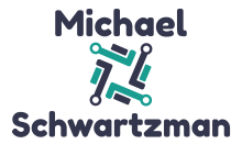Unlock the Full Potential of Microsoft Copilot with Prompt Engineering Techniques
Introduction:
This blog post accompanies the talk I delivered at the M365 GenAI conference on Sunday, the 31st of March 2024. The discussion aimed to demystify the art of crafting effective prompts, a topic that’s becoming increasingly relevant as AI technologies like Microsoft Copilot become integral to our daily tasks. Here, I delve deeper into the principles of prompt engineering, expanding on the ideas and strategies shared during the conference to help you harness the full potential of AI interactions.
Ever wondered why some prompts are super generic and not relevant to the goal you’re trying to achieve, while others give you exactly the results you were asking for? In this article, I’ll break down the components of the perfect prompt. A prompt is essentially a question, or a statement designed to elicit a response from an AI. It’s crucial because it guides the direction and quality of the response. Understanding what makes a good prompt is the first step in prompt engineering, which is the art and science of crafting these questions or statements to achieve specific, desired outcomes in AI interactions or user engagements.
The Perfect Prompt Formula
Crafting the perfect prompt is like a recipe with four main ingredients: goal, context, source, and expectations. Start with a clear goal—the heart of your prompt. Add context to give it depth and guide the response in the right direction. Sources and expectations are optional but can add flavor, making your prompt more precise and tailored. Think of it as asking a question with just enough detail to get the exact answer you need. Whether simple or detailed, the right mix can unlock the full potential of AI tools like Copilot, making your interactions more effective and insightful.
Defining Your Goal
Defining a clear goal is crucial in prompt engineering, as it shapes the prompt to produce precise and useful outcomes. Using action verbs like “summarize,” “generate,” “write,” and “edit” directs the AI’s response towards the intended result. Here are concise examples:
- Generate: “Draft a three-month onboarding plan in a format of your choice.”
- Edit: “Refine the onboarding plan to a formal tone.”
- Understand: “Condense the detailed report into an executive summary.”
- Ask: “Gather details on a specific project announcement.”
- Catch Up: “List action items from the recent manager meeting.”

Context is key
Defining context in prompt engineering is essential to tailor responses accurately. It involves understanding the user’s background, goals, and environment to provide relevant assistance. For example, “I’m a Microsoft Employee to onboard to a new technical specialist over the next 3 months.I come to the office 3 times a week on Monday, Tuesday and Wednesday the rest of the week I work remote. The challenge is managing the vast potential contexts to focus on what’s pertinent. Tools like copilot can auto-detect work-related context, enhancing precision and effectiveness in guidance.
Leveraging Examples and Sources
In prompt engineering, clarity and context play pivotal roles in achieving desired outcomes. By providing an example within the prompt, it guides the AI towards a more accurate and contextually relevant response. For instance, structuring an interview answer using the STAR framework (Situation, Task, Action, Results), an example prompt could be simplified and made more direct:
“Using the STAR framework and details from my resume, craft a response to the question ‘What’s your biggest weakness?'”
This refined prompt explicitly directs the AI to utilize the STAR framework, ensuring a structured and comprehensive answer, while also implying the need to reference the provided resume for personal details, thus maintaining relevance and specificity.
Setting Expectations
Persona
In prompt engineering, defining a persona is crucial because it shapes the voice and perspective of your AI assistant, making interactions more meaningful and tailored to your needs. For instance, if you envision your AI as a work copilot, it will strive to offer personalized assistance drawn from your organization’s specific context. Similarly, picturing the AI as a hiring manager helps focus its responses on recruitment, while imagining it as a senior product marketing manager tunes its advice towards marketing strategies. Essentially, by considering who you’d ideally want to consult for a given task, you can craft prompts that transform your AI into the expert companion you need.
Tone
Selecting the right tone in prompt engineering shapes the conversation. Casual keeps it friendly, formal adds seriousness, and wit brings creativity. Enthusiasm injects energy, while pessimism adds caution. Tools like Microsoft O365 Copilot, with predefined tones in Outlook and the newly announced “Sound Like Me” feature, make it easier to match the tone to your intent.

Format Specifications
Tailoring your prompts can significantly shape the AI’s responses to fit your preferences, like neatly organized tables which happen to be my favorite format. This not only streamlines information but also makes it more actionable. A pro tip to enhance this process: when asking for email proofreading, request changes to be highlighted in bold. This small adjustment ensures that edits stand out, demonstrating how specific prompts can lead to more effective and personalized outcomes.
Conclusion:
Concluding our exploration of prompt engineering, it’s clear that mastering this skill is essential for unlocking the full potential of AI tools like Microsoft Copilot. By understanding the importance of goal, context, source, and expectation, we can craft prompts that lead to more precise and relevant AI interactions.
This knowledge isn’t just a technical skill; it’s a way to enhance our collaboration with AI, making it a more effective partner in our daily tasks. As we move forward, I encourage you to apply these principles and experiment with your prompts. The journey doesn’t end here; as AI evolves, so will the art of prompt engineering. Keep exploring, and let’s shape the future of human-AI collaboration together.
Reference Material and Further Reading:
- Microsoft Copilot Prompt Engineering Resources:
- YouTube Material:
